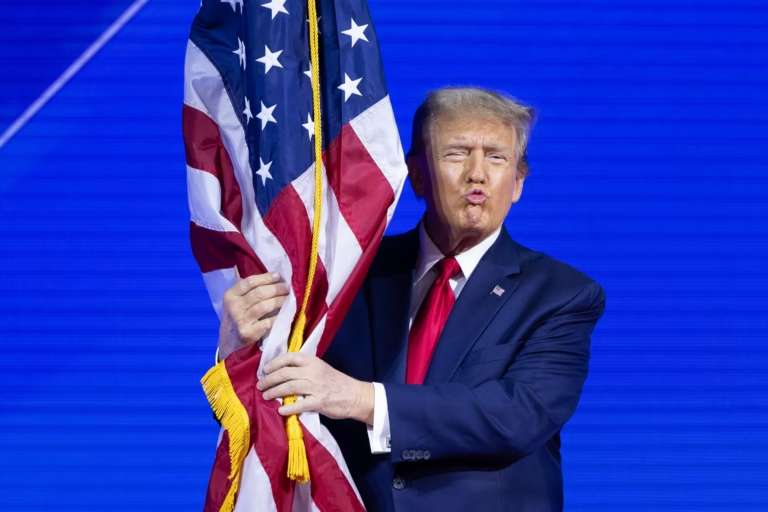In a move that has sent shockwaves through global markets, President Donald Trump announced that starting Tuesday, the United States will impose a 25% tariff on imports from Canada and Mexico. This decision has reignited fears of a North American trade war, with potential repercussions for inflation and economic growth.

(President Donald Trump presenting the Executive order of Tariffs on bordering countries Mexico and Canada)
“No Room Left” for Negotiations
President Trump declared that the tariffs are a necessary measure to combat issues such as fentanyl trafficking and illegal immigration. He also aims to address trade imbalances and encourage the relocation of manufacturing facilities to the United States. Emphasizing the urgency, Trump stated, “They’re going to have to have a tariff.”
Market Turmoil and Economic Concerns
The announcement had an immediate impact on financial markets. The S&P 500 index dropped 2% during Monday afternoon trading, reflecting investor anxiety over potential inflation and disruptions to longstanding trade relationships with Canada and Mexico.
Economists warn that such tariffs could exacerbate inflation, potentially leading to prolonged high interest rates, which would affect mortgages and loans.
Canada and Mexico Brace for Impact
Canadian Prime Minister Justin Trudeau announced that Canada is prepared to respond with 25% tariffs on $155 billion worth of American goods, with an initial $30 billion tranche taking effect immediately.
According to cbsnews.com Mexican President Claudia Sheinbaum emphasized Mexico’s readiness to implement retaliatory measures, stating that the country is unified and prepared to defend its interests.
Domestic Criticism and Future Tariff Plans
Critics within the United States argue that the tariffs could worsen inflation and strain relationships with key allies. Senate Democratic Leader Chuck Schumer remarked that voters were primarily concerned about inflation, and these tariffs might exacerbate the issue. Senator Amy Klobuchar expressed concerns about increased costs for farmers, particularly regarding fertilizer prices. Looking ahead, President Trump plans to implement “reciprocal” tariffs in April, matching the rates imposed by other countries, including considerations of subsidies and value-added taxes.

